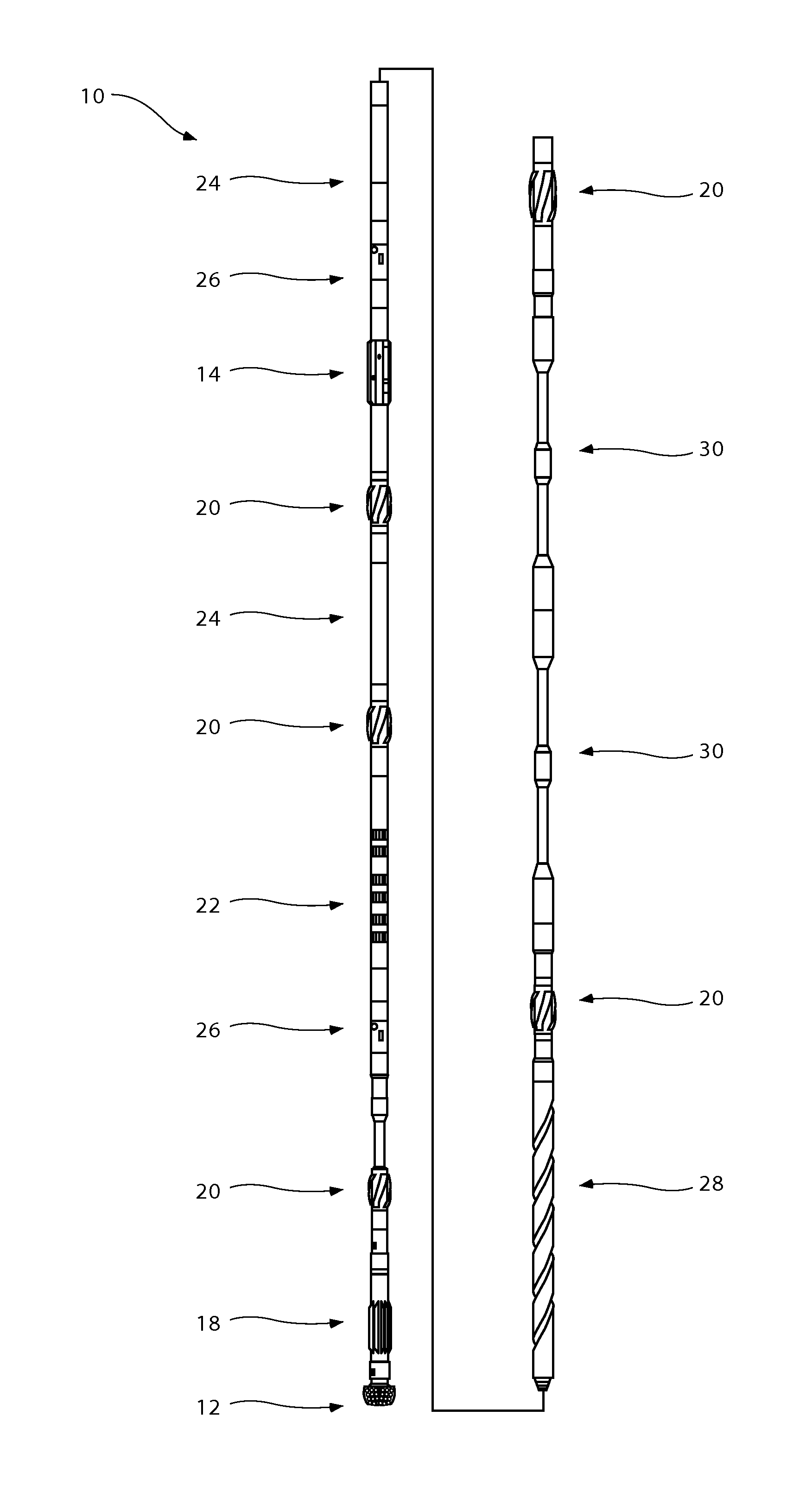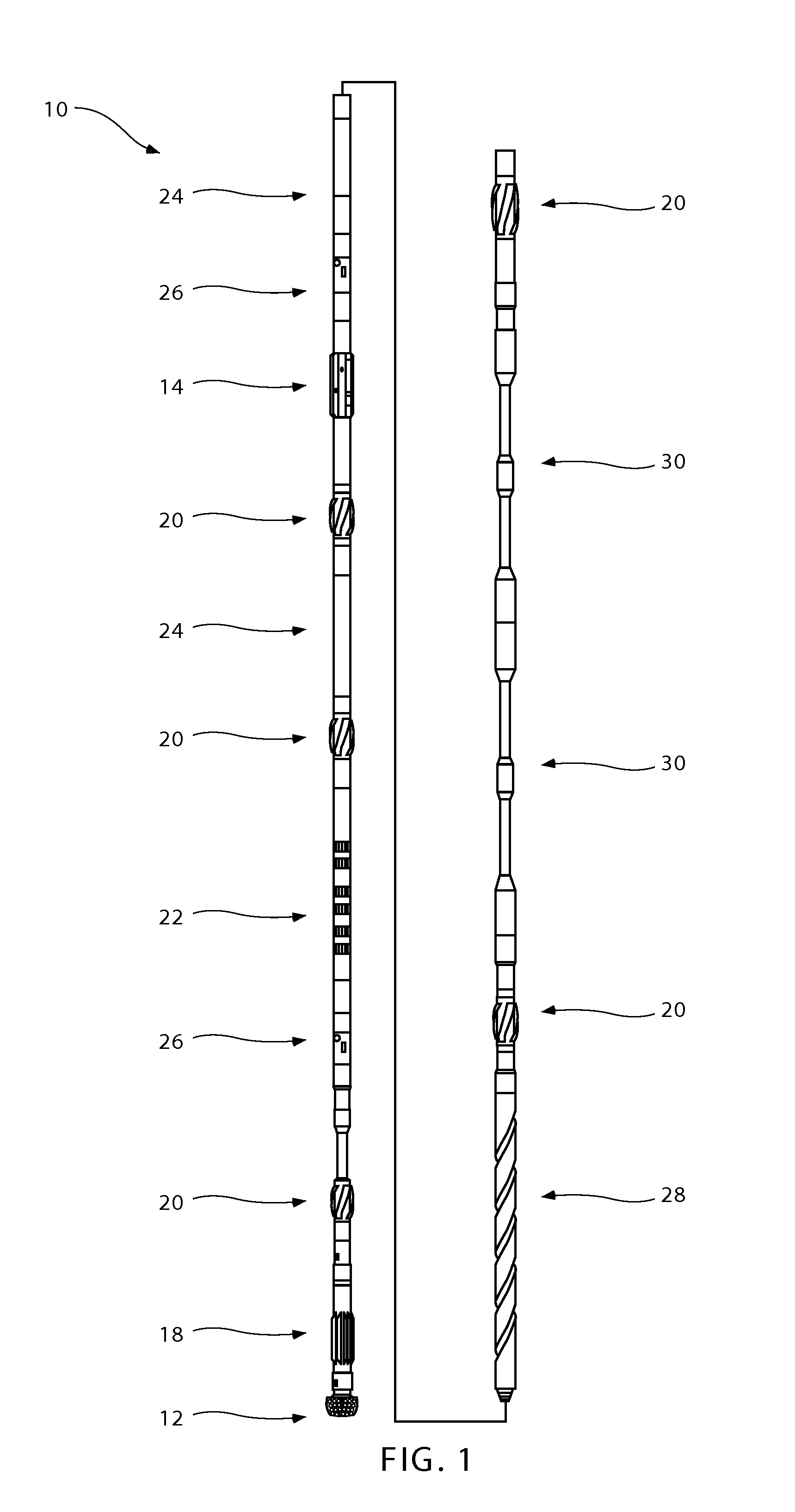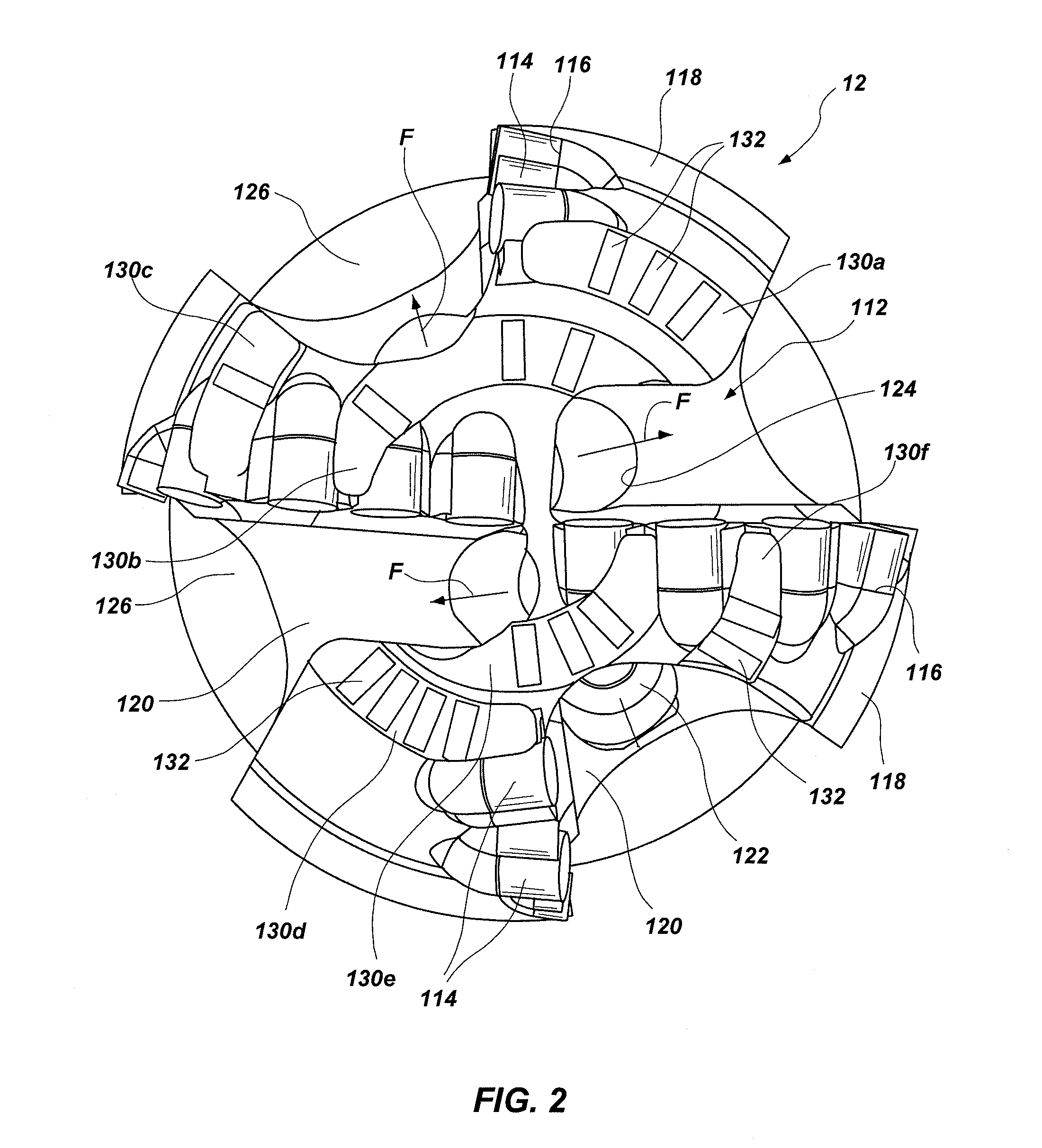Methods, systems, and tool assemblies for distributing weight between an earth-boring rotary drill bit and a reamer device
a technology of earth-boring rotary drill bit and reamer device, which is applied in the direction of drilling rods, drilling pipes, cutting machines, etc., can solve the problems of inability to achieve uniform distribution of weight-on-bit applied to the bottom hole assembly, relative hard and difficult drilling through, and limited penetration rate of the bottom hole assembly
- Summary
- Abstract
- Description
- Claims
- Application Information
AI Technical Summary
Problems solved by technology
Method used
Image
Examples
example
[0076]A bottom hole assembly 10 like that shown in FIG. 1 was used to drill a wellbore as described in I. Thomson et al., “A Systematic Approach to a Better Understanding of the Concentric Hole-Opening Process Utilizing Drilling Mechanics and Drilling Dynamics Measurements Recorded Above and Below the Reamer,” International Association of Drilling Contracts (IADC) and Society of Petroleum Engineers (SPE) Paper No. IADC / SPE 112647 (2008), which was prepared for presentation at the 2008 IADC / SPE Drilling Conference held in Orlando, Fla., U.S.A., between Mar. 4, 2008 and Mar. 6, 2008, which is incorporated by reference herein in its entirety. The bottom hole assembly 10 resulting in improved performance and reduced downhole vibrations relative to a previously known bottom hole assembly configuration.
PUM
 Login to View More
Login to View More Abstract
Description
Claims
Application Information
 Login to View More
Login to View More - R&D
- Intellectual Property
- Life Sciences
- Materials
- Tech Scout
- Unparalleled Data Quality
- Higher Quality Content
- 60% Fewer Hallucinations
Browse by: Latest US Patents, China's latest patents, Technical Efficacy Thesaurus, Application Domain, Technology Topic, Popular Technical Reports.
© 2025 PatSnap. All rights reserved.Legal|Privacy policy|Modern Slavery Act Transparency Statement|Sitemap|About US| Contact US: help@patsnap.com



